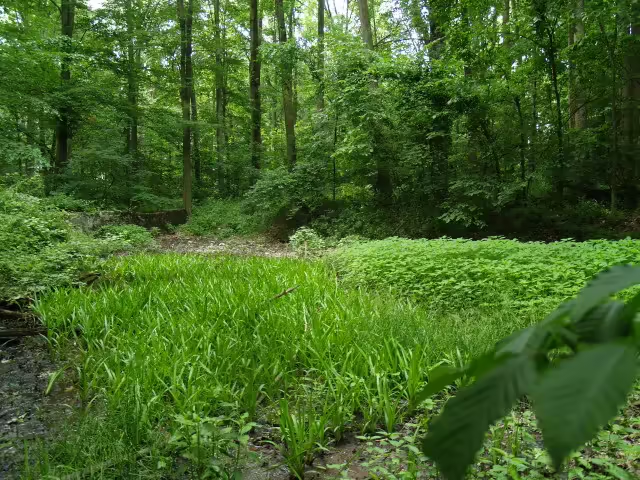Table of Contents for False Nettle (Boehmeria cylindrica)
False Nettle (Boehmeria cylindrica) is found in moist loamy places along streams and wetlands with no or light shade. It has green/white non-showy flowers that appear in the summer and fall. It is the host plant for three species of butterflies and a gall midge (fly). This plant can be purchased in the McMullen House Bed & Breakfast Garden Shop.
Taxonomy and History of False Nettle (Boehmeria cylindrica)

Taxonomy
False Nettle (Boehmeria cylindrica) was originally described by Carl Von Linnaeus as Urtica cylindrica in 1753 in Species Plantarum. The genus name was later changed in 1788. A member of the Nettle Family (Urticaceae), the species has sometimes been split into two varieties — drummondiana and scabra (Biota of North America Program).
False Nettle Description and Alternative Names

Description
False nettle is a herbaceous plant that grows from 1 to 3 feet tall. The serrate leaves are lanceolate and range from 3 to 6 inches in length and 1 to 3 inches in width.
Alternative Names
This plant is also known by small-spike false nettle and bog hemp.
Range and Habitat

Range
This plant is found in eastern North America from New Mexico to Maine.
Habitat
It is found on the edges of streams, riverbanks, and wetlands. In gardens it likes places that have partial shade and moist conditions.


False Nettle Host Species
Host plant for the Eastern Comma (Polygonia comma), Question Mark (Polygonia interrogationis) , and Red Admiral (Vanessa atalanta) butterflies.
Other Wildlife Value
A gall midge (Neolasioptera boehmeriae) uses the leaves of false nettle for galls. (Wikipedia)
Interesting Facts
The genus name, Boehmeria, is named for Georg Rudolf Boehmer, a German botanist. The species name, cylindrica refers to the cylindrical spikes. — Wikipedia